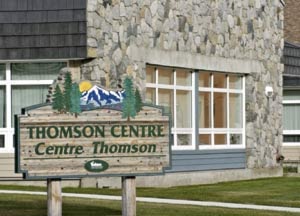In the twilight of its mandate the Yukon Party government is making two commitments to bolster the territory’s health-care system.
Health and Social Services Minister Brad Cathers announced a $50,000 debt relief program for doctors on Wednesday.
The program will siphon funds from the five-year, $12.7 million Health Human Resources Strategy that Ottawa guaranteed in March to address the shortage of health professionals in the Yukon.
Qualifying doctors will receive $20,000 to pay down medical school loans when they move to the territory.
They’ll receive another $20,000 after a second year of working in the Yukon, and $10,000 at the end of their fourth year.
“This concept has been suggested to us by Yukoners,” said Cathers on Wednesday.
“The idea was further suggested and recommended to us by the Yukon Medical Association.”
The association passed a resolution “to consider repaying portions of a new physician’s accumulated debt in return for service to try and improve our ability to attract new graduate physicians to the territory” at its 2005 annual general meeting, said Cathers.
“We’ve heard consistently that new graduates coming out of medical school are faced with large debt loads, which creates difficulties for them in opening up new practices.”
The new allotment totals $200,000 a year — enough to finance debt repayment for four doctors approved to the program each year.
The program does not have a sunset clause, but will be reviewed annually.
To qualify, a doctor must sign a five-year contract to work in the Yukon, said Cathers.
The program does not involve restrictions requiring a physician to work in Whitehorse or any other Yukon community.
The program’s goal is to improve the territory’s competitive ability to attract doctors.
“We do need several new doctors,” said Cathers.
“The exact number is hard to pin down.”
Then, on Thursday, Cathers announced the re-opening of the Thomson Centre in Whitehorse.
For four years — throughout the Yukon Party’s term — the continuing care centre adjacent to the Whitehorse Hospital has remained empty while renovations to repair the leaky roof have been ongoing.
The centre was not up to snuff when it was built in 1992 under the NDP government of Tony Penikett, said Cathers.
“In a misguided attempt to save some costs of building the facility, the Thomson Centre was not built to code.
“That was a poor decision, obviously, at the time, and it has cost us millions of dollars to repair it.”
The centre was completed in 1993.
Over the years, a leaky roof let moisture inside the building, allowing toxic mould to grow indoors.
“There are concerns with mould, particularly for people who have respiratory problems,” said Cathers.
The centre was formally closed in 2002. Residents there were moved to the newly built Copper Ridge Place.
The government spent $2.4 million over the last three years repairing the roof and wiring, according to officials.
The total cost of repair has been pegged by some at more than $4 million.
Earlier this year, the government ordered a review of the centre’s possible uses.
A mental health unit, a detoxification unit and even office space were suggested as uses for the centre during the mandate of former Health Minister Peter Jenkins.
But the review, received “a couple of months ago,” recommends that the building’s original purpose as a continuing-care facility with palliative-care beds is most proper, said Cathers.
There’s still $2 million worth of “capital improvements” that need to be completed, such as installing a nurse-call system and purchasing 44 new beds that the facility can house, he said.
The centre will open in six months, with beds “phased in” over time in accordance with budget cycles, said Cathers.
There are 17 Yukoners waiting for continuing-care beds, he added.
“There has been work ongoing every year (since 2002) to do the repairs. It has taken a lot longer than anyone would have liked, both at our level and within the department.
“There has been frustration with how long it has taken to make the needed changes and repairs to bring it up to a state where we can re-open it for people.
“But we do have to be especially careful that it is a suitable environment for putting in people that are often in a fragile state in their life, when they need that level of care.
“The last thing anyone wanted was to realize that not all the mould had been dealt with, to have a problem where the roof starts leaking again.”
Both announcements smack of political opportunism to opposition parties, because a territorial election must be called by November 4.
“What took so long? Why now?” asked Steve Cardiff, interim leader of the Yukon New Democratic Party.
“We’re in the pre-election period here and they need to be seen to be proactive.
“In the dying days of their mandate, they finally come up with something.”
Nevertheless, Cardiff applauded both initiatives, with reservation.
The doctor-retention program only commits physicians to five years, he noted.
“We need to address retention.
“We’re in competition (for doctors) with every other jurisdiction in North America, so whether or not this will fulfill the medical needs of Yukoners remains to be seen.”
The Thomson Centre announcement ends years of speculation about the future use of the building, but questions about the need for a detox facility and a mental health unit still linger, said Cardiff.
The Yukon Liberal Party lobbied hard for the re-opening of the Thomson Centre over the past year, and leader Arthur Mitchell suggested a debt-repayment scheme to attract doctors in December 2005.
“I’m glad to see a Liberal idea has been adopted by this government,” said Mitchell on Thursday.
Paying down medical school debt for new physicians is the right step, he said.
“I question the timing of it.
“It does question the sincerity of their efforts.
“This wasn’t rocket science.”
